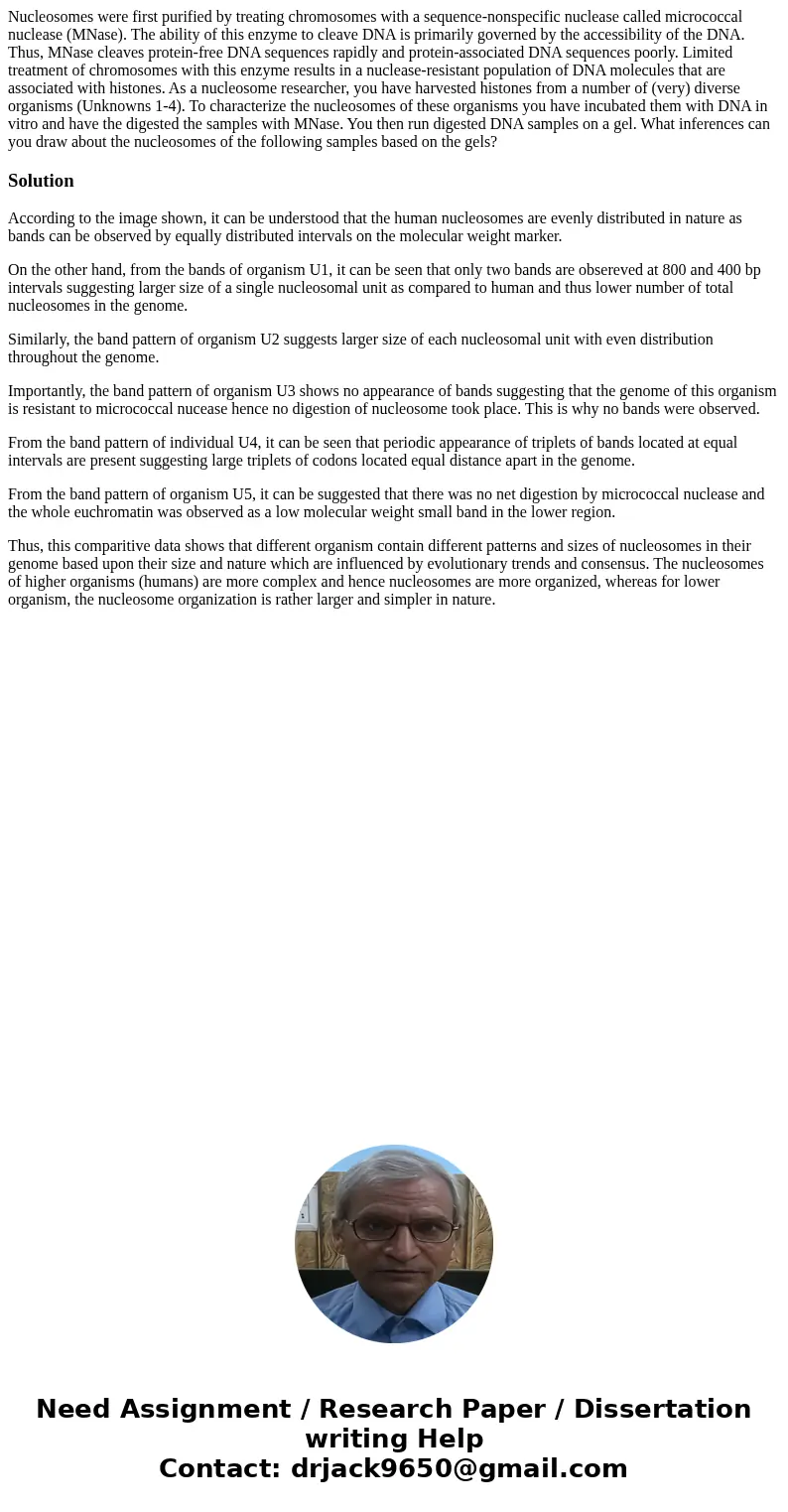Nucleosomes were first purified by treating chromosomes with
Solution
According to the image shown, it can be understood that the human nucleosomes are evenly distributed in nature as bands can be observed by equally distributed intervals on the molecular weight marker.
On the other hand, from the bands of organism U1, it can be seen that only two bands are obsereved at 800 and 400 bp intervals suggesting larger size of a single nucleosomal unit as compared to human and thus lower number of total nucleosomes in the genome.
Similarly, the band pattern of organism U2 suggests larger size of each nucleosomal unit with even distribution throughout the genome.
Importantly, the band pattern of organism U3 shows no appearance of bands suggesting that the genome of this organism is resistant to micrococcal nucease hence no digestion of nucleosome took place. This is why no bands were observed.
From the band pattern of individual U4, it can be seen that periodic appearance of triplets of bands located at equal intervals are present suggesting large triplets of codons located equal distance apart in the genome.
From the band pattern of organism U5, it can be suggested that there was no net digestion by micrococcal nuclease and the whole euchromatin was observed as a low molecular weight small band in the lower region.
Thus, this comparitive data shows that different organism contain different patterns and sizes of nucleosomes in their genome based upon their size and nature which are influenced by evolutionary trends and consensus. The nucleosomes of higher organisms (humans) are more complex and hence nucleosomes are more organized, whereas for lower organism, the nucleosome organization is rather larger and simpler in nature.

 Homework Sourse
Homework Sourse